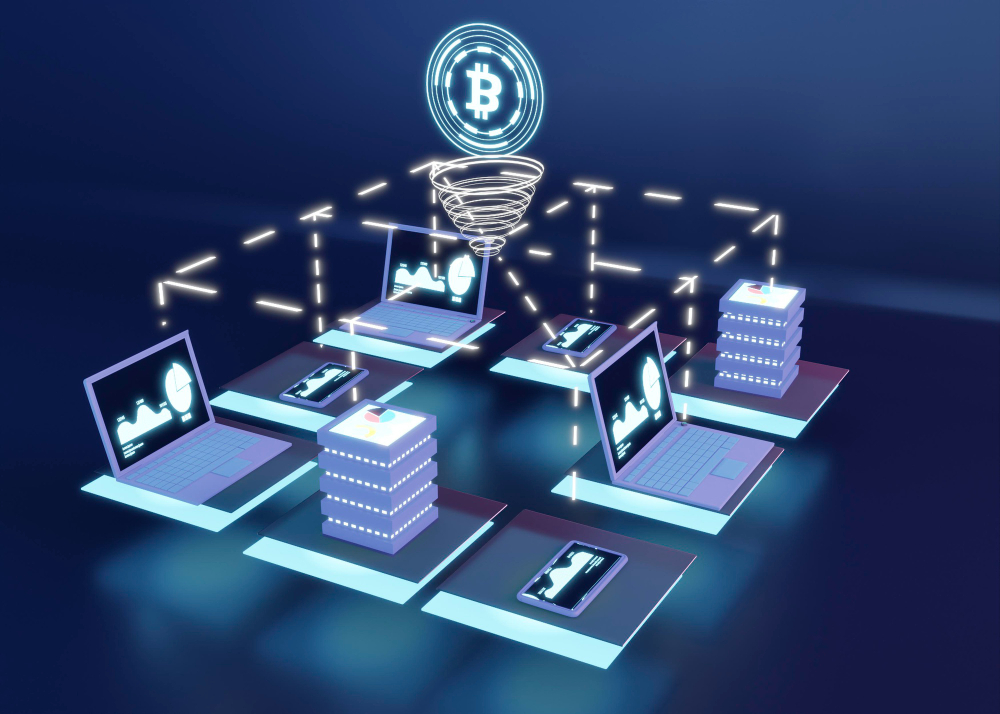In 2020, the Federal Reserve increased the money supply by approximately 40%, leading to widespread inflation. This intervention has gradually eroded people’s savings, forcing them to exert more effort just to maintain their standard of living. The solution to this problem is to create a tamper-proof monetary system through decentralization and a fixed supply. Bitcoin was designed with this purpose, but it requires physical grounding to be effective.
The Role of Proof-of-Work Mining in Bitcoin’s Security
If Bitcoin were purely digital, altering its blockchain ledger would be relatively simple. However, proof-of-work mining serves as an energy-intensive safeguard, tying Bitcoin’s digital code to real-world resources. This process makes it nearly impossible to alter the ledger without consuming an exorbitant amount of energy, creating a virtually impenetrable energy barrier.
Bitcoin’s Energy Consumption as a Trade-Off for Security
Bitcoin’s security comes at the cost of significant energy consumption. Similarly, the energy demands of data centers producing AI-driven content like text, images, and videos are substantial. However, in both cases, human productivity is enhanced. The key question is whether these energy needs can be optimized in a symbiotic manner.
Bitcoin Mining and AI: Energy Dynamics and Optimization
There is a strong correlation between a nation’s energy consumption and its level of development. High energy usage is essential for various layers of societal advancement, from agriculture to high-performance computing (HPC) like Bitcoin mining and AI. According to the Department of Energy (DoE), data servers consume significantly more energy than commercial office buildings, contributing to 2% of total U.S. electricity usage.
With the rising demand for data centers, the International Energy Agency (IEA) projects that their electricity consumption could surpass 1,000 terawatt-hours (TWh) by 2026. In comparison, Bitcoin mining currently demands around 130 TWh annually. AI data centers are also expected to consume 200 TWh annually between 2023 and 2030.
Technological Advancements in Energy Efficiency
The Bitcoin mining industry has made significant strides in energy efficiency through the use of advanced ASIC machines and superior cooling solutions. Similarly, Nvidia’s latest GPUs have significantly reduced energy costs for AI operations. However, further optimization is needed beyond just upgrading hardware.
Enhancing Energy Management Through Bitcoin Mining
Electricity transmission involves balancing high outputs and low inputs, resulting in transmission and distribution (T&D) losses. One way to mitigate this is by locating Bitcoin mining operations closer to power sources. For instance, TeraWulf’s facility near the Susquehanna nuclear power plant achieves efficient Bitcoin mining at a low cost of 2 cents per kWh.
Bitcoin mining can also aid in balancing electric grids by acting as a dispatchable load, adjusting energy consumption in real-time to match supply and demand. This capability not only enhances grid stability but also provides financial incentives for Bitcoin mining companies.
Integrating AI and Bitcoin Mining for Optimized Energy Use
While both AI and Bitcoin mining are energy-intensive, their integration presents opportunities for optimization. Bitcoin mining operations have proven their ability to innovate and manage large-scale energy consumption. As AI data centers put increasing pressure on the electric grid, Bitcoin mining’s flexible load management could play a crucial role in balancing energy demands.
The Future of Hybrid Data Centers
The transition from Bitcoin-only mining operations to hybrid data centers is already underway. Companies like Iris Energy and Core Scientific are shifting some of their power capacity to support AI operations. This hybrid approach not only boosts revenue but also strengthens Bitcoin’s financial stability by reducing the likelihood of sell-offs during bear markets.
Conclusion: The Convergence of Bitcoin Mining and AI
As the world economy continues to evolve, the convergence of Bitcoin mining and AI is inevitable. Bitcoin’s energy-intensive proof-of-work model and AI’s growing energy demands are leading to the development of hybrid data centers. This synergy creates a feedback loop of incentives, paving the way for a future where sound money and AI-driven productivity go hand in hand.
The post AI and Bitcoin mining: A symbiotic relationship for the digital age appeared first on CryptoSlate.















